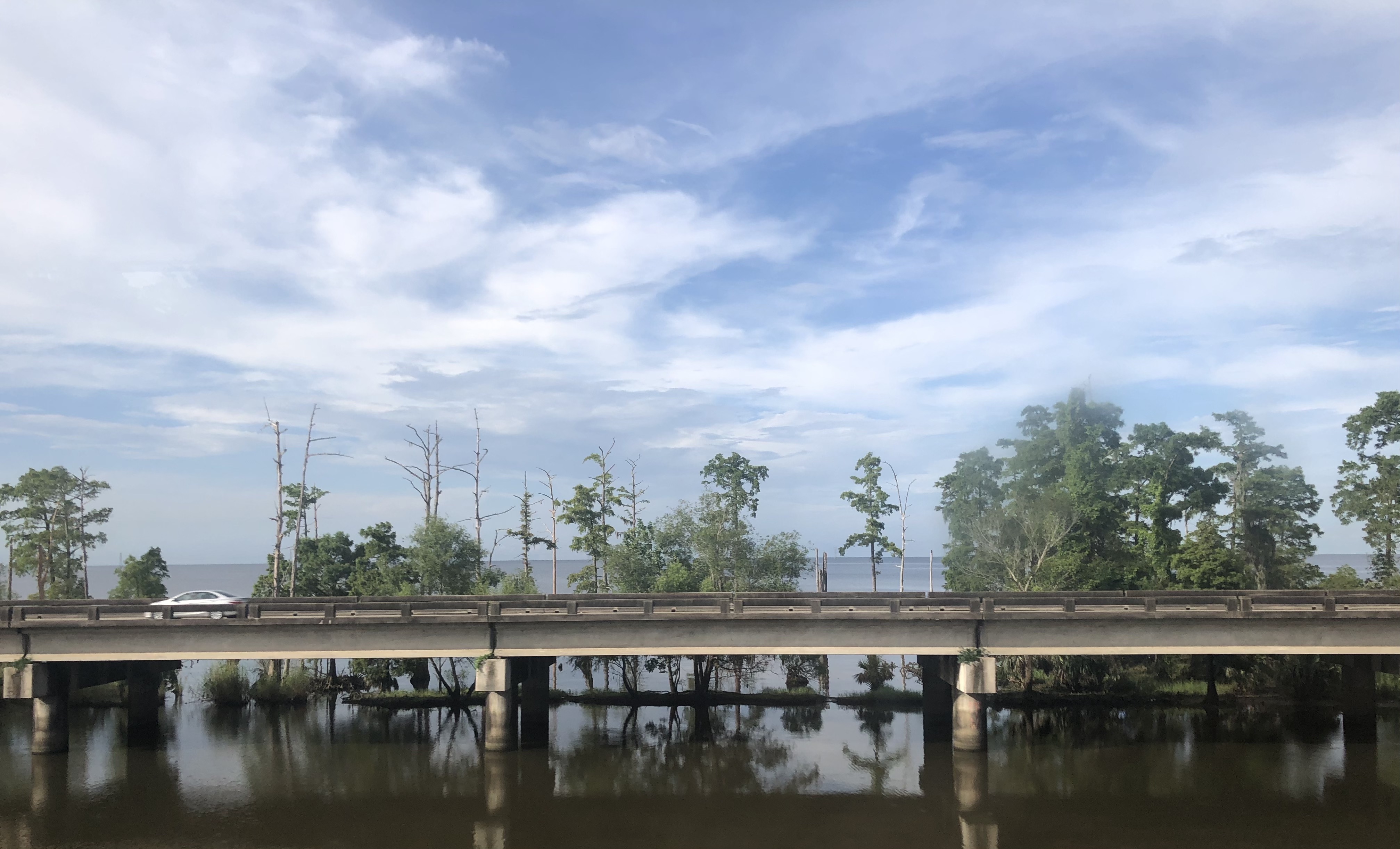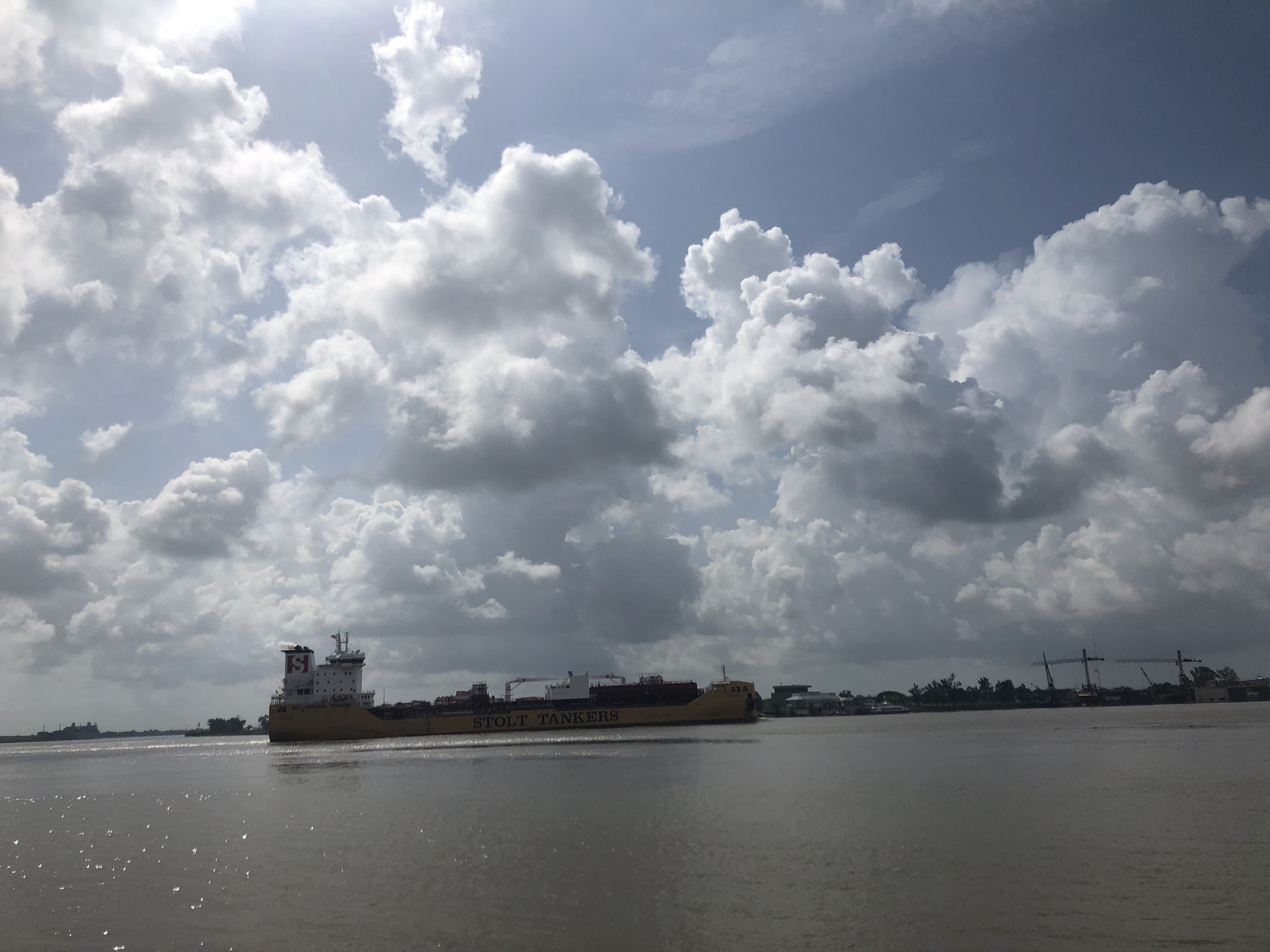
Somewhere in the past of chattel slavery, my ancestors were brought to the land now known as Alabama, the traditional and unceded territory of the Poarch Band of Creek Indians. I was raised in the lands of the Houma, Choctaw, Chitimacha, and Atakapa Ishak. I did not know the names of the traditional caretakers of the land until after I moved away.
I am told that 23andMe charts my DNA back to what’s now known as Nigeria, among other places. I heard this from my uncle, who told my mom, who told me. I have little to no interest in knowing more about the fiction of its statistical breakdown.
I am a Black American in all the ways that matter. And I belong to the Gulf Coast in all the ways that matter. I have been bandied about by its winds. I have seen its waters rise. I have been loved by its people, those who call you "baby" at first glance. I have feasted on its shrimp and crawfish and oysters in the company of those I love. And I have feared for the people rebuilding storm after storm.
These are intertwined histories—the erasures of the names of the land, the genocide of a people, the strategic abandonment of others, the pitting against one another for resources. In the wake of national uprisings after the police murder of Black Houstonian George Floyd, many across the country were introduced to the acronym BIPOC, which foregrounds the enslavement of Black people and Indigenous dispossession to the project of white supremacy. But what does that mean in practice? And what does that look like on the Gulf Coast?
We’ve spent less than 200 years pursuing oil hand over fist. A large portion of the coastal erosion in Louisiana is due to the network of canals that sliced and diced the wetlands in the early 20th century; they allowed saltwater from the Gulf to seep into the marshes, killing the wildlife, widening the canals, and pushing the waters slowly inland, turning once fecund rivers and streams brackish, unfit for the life that had learned to live there. Studies would later show that between 1932 and 1954, the coast receded an average of 19 feet per year.
And though yes, the fossil fuels that are burned contribute to climate change which increases both the frequency and intensity of the storms that batter the Gulf, storms which disproportionately affect marginalized peoples, they also affect the health of people near the refineries every day. The carcinogens in the air they breathe. The cancers that they cause. This greed, of course, points back to the root problem of racial capitalism. The dispossession of Indigenous peoples, the enslavement of kidnapped Africans in order to work the land, and the accumulation of capital in the hands of the few, the self-proclaimed white. In the years since the disaster that was 1492, a man became a container for holding property, and the property was worth only what could be extracted from it. Louisiana makes the costs of that project visible—it has begun to disappear.
Though these communities’ struggles are intertwined, public narratives rarely connect the sources of their problems to the twin processes of colonization and industrialization that led to climate change the world over, and to the harm that colonization has caused us to do upon one another. The investment of the descendants of the enslaved in the settler colonial project; the perpetuation of anti-Blackness in Native communities.
To borrow a phrase from Black feminist scholar bell hooks, I came to theory because I was hurting. Don’t get me wrong, I’ve been Black my whole life, and I’ve always been politically active, but in my first year of college, I fell into Black Studies, into Caribbean Studies, and I began to unravel all that the nation had failed to do, the patterns that power created and whose back they were built upon, regardless of political party. And so I found Black feminist scholar Tiffany Lethabo King’s formulation of “the Black Shoals” useful as a method of theorizing. She locates the Black Shoals at the intersection of land and sea as a means of staging the encounter between Black and Native Studies. The ocean, that oft theorized location in Black studies, replete with the legacies of the Middle Passage, over which we gaze back to the land we were stolen from. The land that reminds us that decolonization is not in fact a metaphor, that its ultimate aim is the rematriation of Indigenous lands, that is to say, a project of sovereignty.
Here on the Louisiana coast, here in the place that industry dug open and left to flood, I believe there is a horizon we can see from the shoal, from the place where our difference encounters one another. There is a new story to tell, a new solidarity to forge. Won’t you join me there?






